The Ultimate Guide to Effective Chest Exercises
While most beginner bodybuilders or fitness enthusiasts don't necessarily ignore chest exercises, many feel like they just can't get it right; that no matter what they do, it doesn't yield results.
Chest exercises are essentially for a stronger entire upper body, so it would be completely counterproductive to abandon chest workout just because it seems difficult or indicating.
Instead, you just need to change your approach, and get educated with more information on the chest muscle groups, and what are the best exercises to start with.
To get the best results for the upper body generally and a more defined chest, it's best to understand the chest muscles and learn how to maximize your workouts with proper form, and what mistakes to avoid.
In this article, this is exactly what we go over.
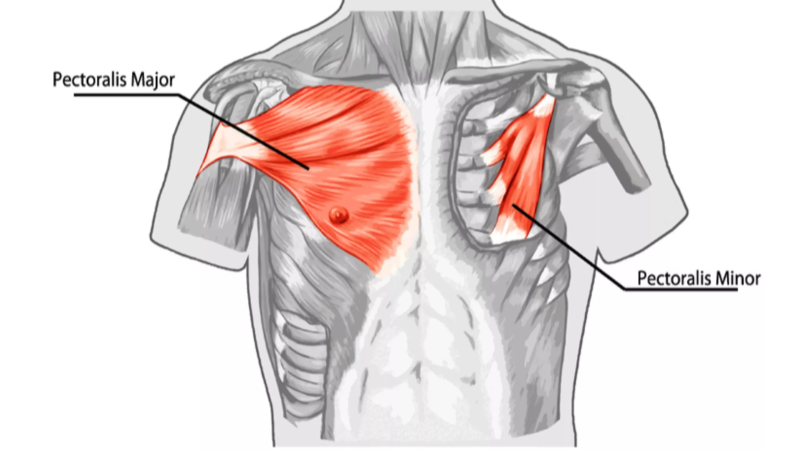
Main Chest Muscles and Their Functions
The chest muscles are a complex and captivating area.
In this section, we have the main muscles, followed by the supporting muscles, and how to incorporate workouts targeting them in your workout.
Pectoralis Major
The pectoralis major muscle is made up of two separate heads that are responsible for flexing the humerus and aiding in its internal rotation.
It's a major muscle that needs you to focus on during workouts.
Chest exercises such as wide-grip chest presses or push-ups help to target this large muscle.
Pectoralis Minor
The pectoralis minor muscle, located in the upper chest area, is a thin triangular muscle that helps stabilize the shoulder blade by pulling it downwards and forwards against the thoracic wall.
This group of muscles aids with movement at the shoulder joint as well. It's generally very important for breathing as well.
Supporting Muscles and Their Function
To maximize chest development, you should incorporate other muscle groups into your workouts.
The muscles we have on this list play an important role in work to stabilizing your body while doing chest exercises and providing the necessary strength.
It’s important to engage those supporting muscle groups when working out chests to gain maximum results from each session and prevent any injury.
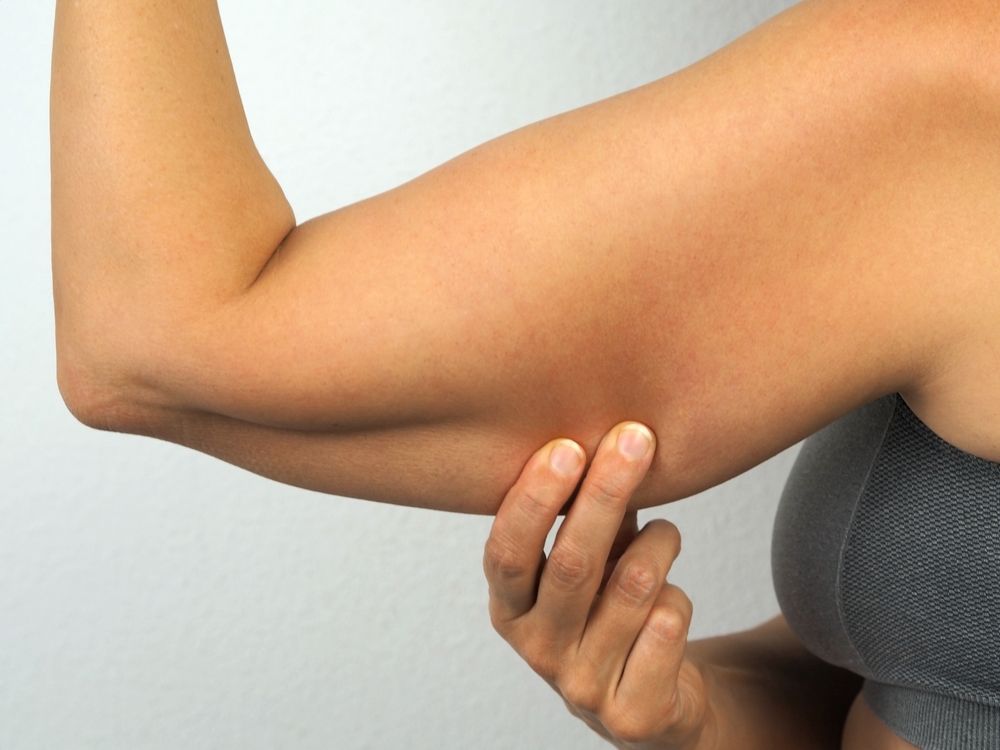
Triceps Brachii
The triceps provide necessary stability and control when extending your elbow joint during push-ups, bench presses, or dips.
They shouldn't at all be ignored for chest workouts as they're very important to ensure proper form and maximized effects.
A few exercises that target this muscle group are shoulder presses, diamond push-ups, and rope pulldowns.
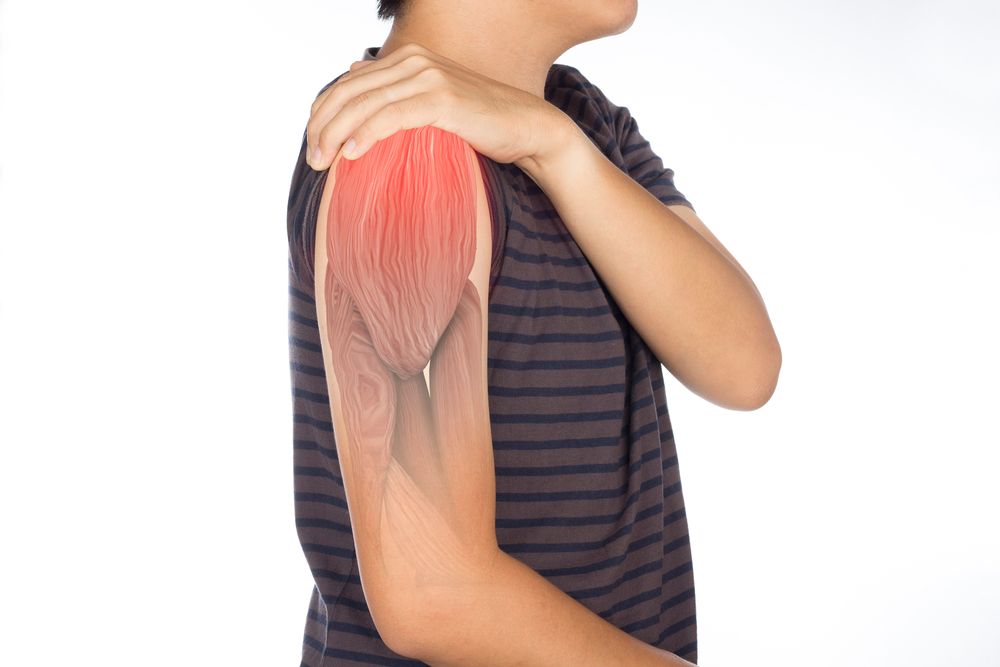
Deltoid Muscle
The deltoid muscle is primarily located in the shoulder and helps to provide flexion of the joint as well, but parts of it extend to the chest.
Movements such as bench presses or overhead presses are an ideal way to bring attention specifically toward activating your anterior deltoids for added precision.
Serratus Anterior
The serratus anterior muscle supplies shoulder stability and strength with pushing movements.
By tracing the scapula as well as the thoracic wall, this particular muscle allows for better overhead lifts as well.
Including activities that specifically target the serratus anterior can bring about an overall increase in muscular power to benefit lifting motions of any kind performed above your head.
Best Dumbbell Chest Exercises
Dumbbell chest exercises and generally using free weight make the best way to exercise your breast tissue and chest muscles.
Focusing on different areas of the muscles in that region will create balance and an overall effective workout.
Here are our most recommended ones:
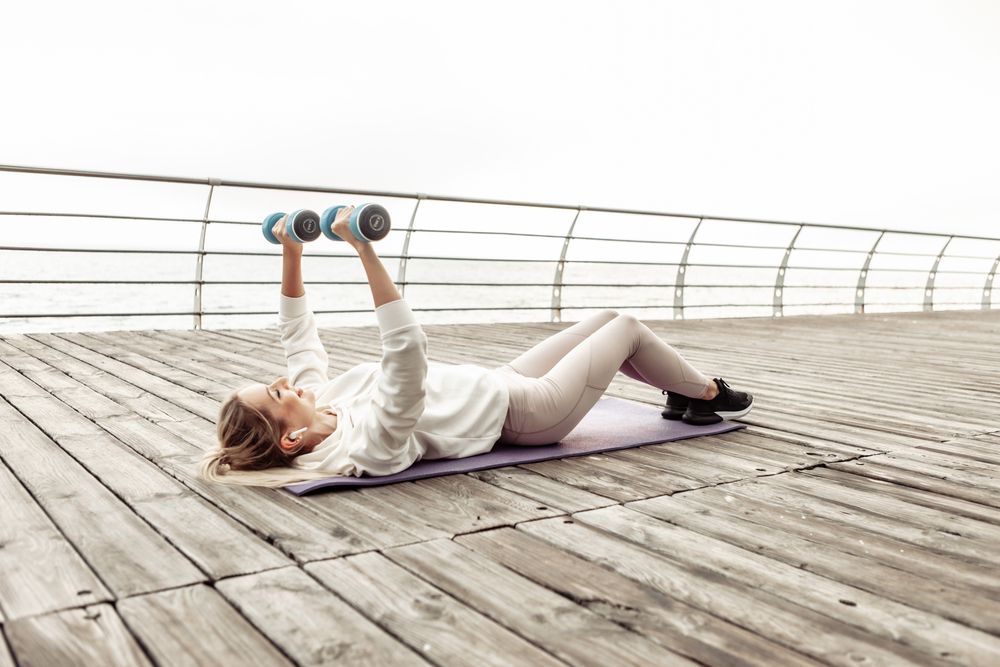
Flat Bench Dumbbell Press
Your starting position for this flat bench press exercise is sitting on the flat bench while holding two weights overhand.
Your hands should be slightly wider than shoulder-width apart, and your knees bent normally.
Lift them upwards until fully extended before returning to the starting position, keeping those arms at 45 degrees.
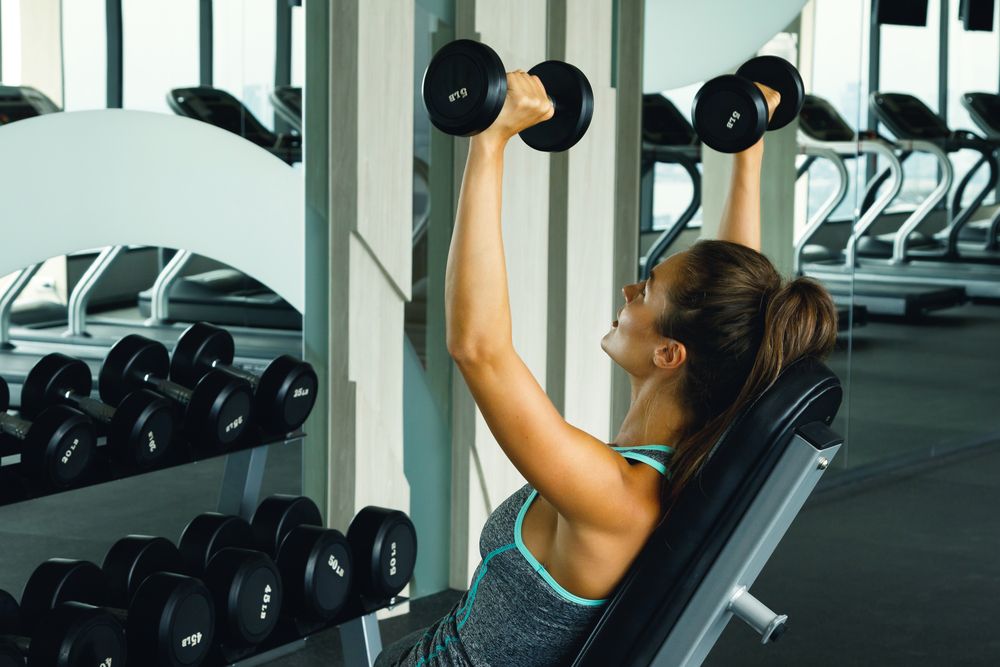
Incline Dumbbell Press
For this exercise, start by angling the incline bench to 45 degrees and laying back with each hand holding one dumbbell.
Then push up until both arms are straightened out above you. Slowly lower them down again into their starting position. And repeat.
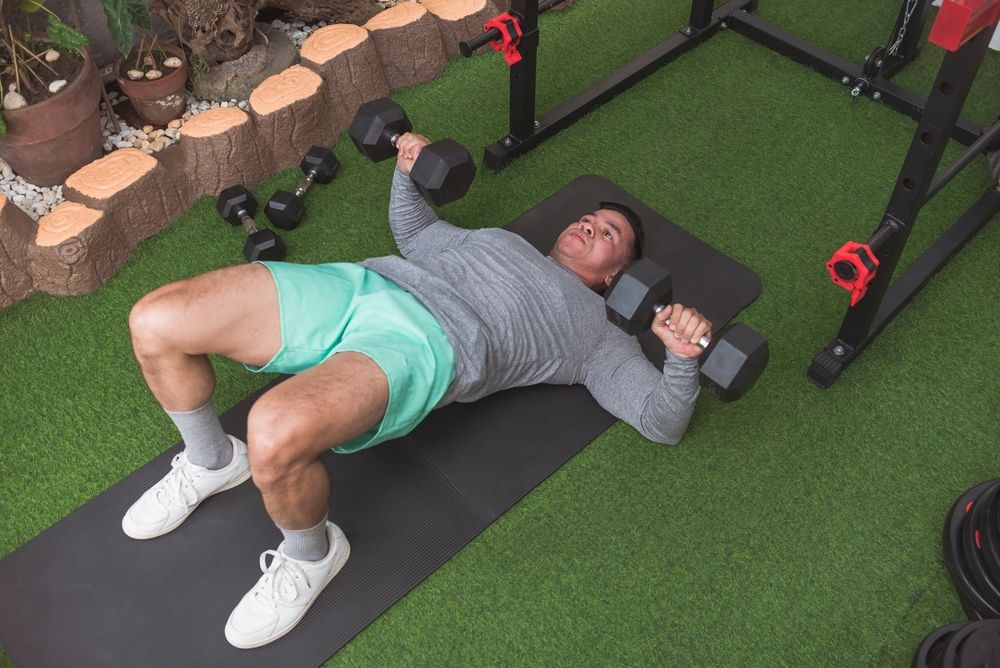
Decline Dumbbell Press
For the Decline Dumbbell Press exercise, you will need two dumbbells and an angeled bench to perform it on.
For the starting position, lie with your arms straight above your shoulders holding each weight, shoulder width apart, in an overhand grip.
Lower the weights slowly down towards your lower chest while lying back on the decline position of the bench. Then press them back up until they reach their original starting spot.
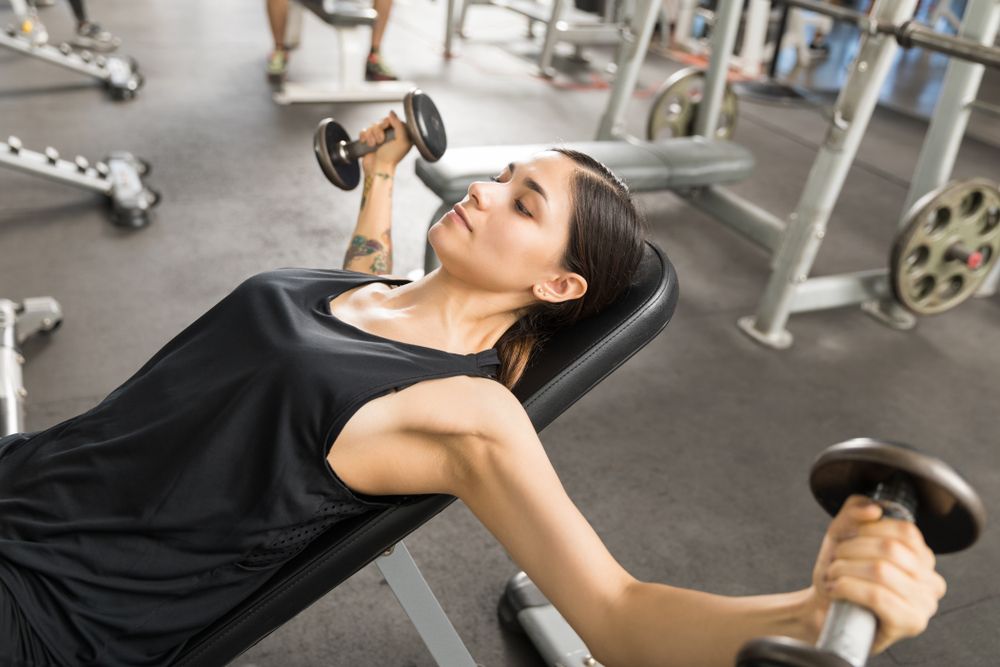
Dumbbell Chest Fly
The Dumbbell Chest Fly is designed to target and extend the chest muscles. It's one of the best dumbbell exercises for the chest and pectoral muscles.
It works out the entire upper body and chest wall.
As a starting position, lie on a flat bench so that both head and shoulders are supported by it or even on a mat on the floor.
Take one dumbbell in each hand with palms facing each other then slowly lower them at shoulder level, keeping arms parallel to the floor.
When the hands reach their position close together again at the starting point, press up toward the original spot.
Standing Dumbbell Chest Press
The Standing Dumbbell Chest Press is similar to the dumbbell bench press but while standing.
As a starting position, your feet should be shoulder width apart with a dumbbell in each hand facing forward.
Next, keep your body stable to avoid swaying or leaning back then extend both arms outwards until your arms are straight. Then slowly lower them back into their starting place.
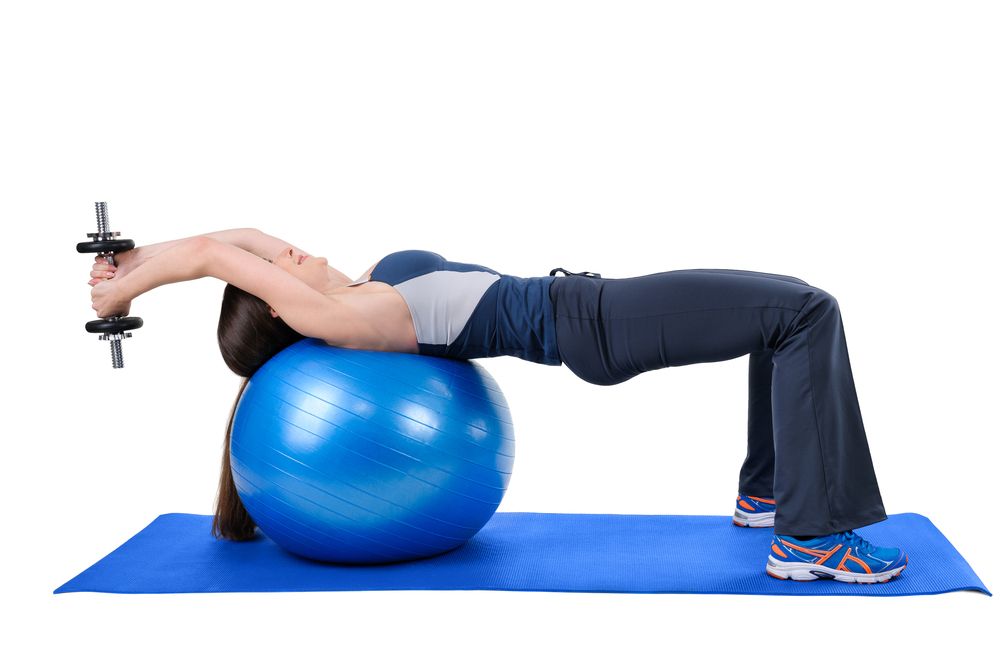
Dumbbell Pullover
To do a dumbbell pullover, lie down on a flat bench with your head and shoulders supported and feet flat on the floor as a starting position.
Hold the dumbbells in both hands, ensuring that your palms are facing each other. Then raise them above chest level until your upper arms are fully extended and shoulder blades brought together.
Slowly lower the weight with a slight bend at your elbows behind the head without losing proper positioning before raising it back up again into its starting position.
Tips for Maximizing Chest Workouts
To get the most out of your chest exercises and experience muscle growth, there are a few key elements that need to be taken into consideration.
We have the most important of those here for you. Focusing on those tips could be all the difference between a successful workout and an ineffective or even counterproductive one.
Proper Form
For optimal results and injury prevention, proper form should be the most essential thing to maintain throughout the workout. If the proper form is too difficult, then you're just not ready for that exercise yet and should try a simplified version of the same movement or choose a lighter weight.
To ensure this is the case, a straight back with a lifted chest must be kept, as well as an appropriate range of motion used to activate abdominal muscles.
However, proper form varies from move to move, so make sure the first time you try a move, there is a guide nearby to ensure you're maintaining the proper form.
If a coach is not available, then a workout buddy with more experience or even just the mirror with an online guide are good alternatives.
Warm-Up Exercises
Getting your body prepared and energized for a chest workout is essential to avoiding injury.
Incorporating some dynamic warm-up exercises into your fitness routine is important for this reason. It also maximizes your consistent ability throughout the workout.
Some warm-up exercises include push-ups and dumbbell lateral raises, for example.
These exercises are designed specifically to prime the muscles needed when doing a chest workout, helping you get ready and avoid any problems that could arise from not being sufficiently warm up beforehand.
Doing regular warmups will also make sure that those same muscles have enough energy available during each session so they’re more resistant to fatigue while training with extra weight or pressure applied by other resistance training.
Progressive Overload
Progressive overload is essential for continuing improvement in chest muscle strength and size without a sudden stop in improvement.
Increase the weight you are lifting gradually, as well as augment your training frequency or number of repetitions. This additional challenge will help build up those muscles and promote growth leading to increased muscular power.
By applying greater stress on these muscles through heavier loads or by increasing levels of resistance, they can become stronger, which leads not only to improved performance but also to a bigger chest muscle mass.
Make Sure You're Eating Right
Maintaining a good nutritional plan is integral to building bigger chest muscles. An accurate combination of essential nutrition components has crucial implications for boosting chest growth along with general fitness outcomes.
While dietary needs vary from person to person, there are general rules that will benefit you (unless you have special needs, etc).
Here's what you should focus on:
Protein Intake
Protein intake is the most essential factor when it comes to muscle growth and recovery. It provides amino acids, which are the main building component of muscle tissue.
They help with repair and maintenance and also support other metabolic processes such as generating hormones.
How much protein you need depends on many factors, like gender, age, dietary special needs, workout intensity, etc. However, a good rule of thumb until you meet with your doctor would be 1.6 to 2 grams of protein per kilogram of body weight daily.
It's also especially beneficial for a percentage of your protein intake to be directly after a workout session.
But it's also the regularity of it that matters most. Regular consumption allows you to benefit from its stimulating effects on growth while fixing any damaged cells or tissues they may have incurred during activity too – ensuring full recovery over time.
Carbohydrate Timing
Post-exercise carbohydrate intake is pivotal in the process of muscle recuperation and preparing for subsequent workouts. It helps with tissue repair/restoration and augments protein synthesis within muscles while simultaneously maxing out stored glycogen levels.
By eating carbs just after finishing exercise, it is possible to replenish glycogen stores which will provide more stamina and facilitate a faster recovery period.
Many people who are trying to lose weight dangerously decrease their carbs intake. However, your body must be getting all it needs to build muscle and strength.
Common Mistakes to Avoid During Chest Workouts
The following mistakes are a big part of why chest workout routines are sometimes ineffective. Once you know what those mistakes are, you can start making sure to avoid them.
Here are the most frequent mistakes to be aware of:
Incorrect Exercise Selection
Performing the wrong chest workouts can lead to an unproductive routine. This could mean opting for exercises that primarily work other muscle groups such as triceps and shoulders or practices with poor range of motion form.
For optimal results and injury prevention, it is necessary to select exercises specifically designed for the chest.
Inadequate Rest Periods
When performing chest exercises, make sure to take adequate rest periods. Working out without enough rest (some studies claim no less than eight hours a night to not sabotage growth in muscle mass) can be counterproductive.
This rest means both between different sets and between each workout in the week. Allowing the muscles time to recover will maximize muscle activation and fatigue management.
This leads to better force production in sets that follow it—thus enhancing overall strength gain, fitness progress, and muscular growth when properly done correctly.
Rest breaks between sets should never be overlooked. They can mean the difference between an effective workout and a mediocre one. And rest between workouts in the same. A good week and a bad week can easily be distinguished by the level of rest in each of them.
Neglecting Supporting Muscles
To make chest exercises more effective and reduce the risk of injury, as well as improve your posture, it is important to incorporate all muscle groups in your chest workout.
That includes the rhomboids, serratus anterior, and gluteus medius
Ignoring supporting muscles might be a big reason why your upper body workout isn't as effective as you imagined it to be.
Chest exercises are an excellent way to enhance flexibility and prevent issues such as back pain and other injuries. They're very important to general upper body strength, improving posture, and preventing injury.
This guide has shown you how every muscle works, the best chest exercises, and the worst mistakes to avoid.
For more advice and content on how to better your health, keep up with luxefit.com, where you can make your health journey more enjoyable and more luxurious by ordering from our clothing collection. Make sure to not miss black Friday!
